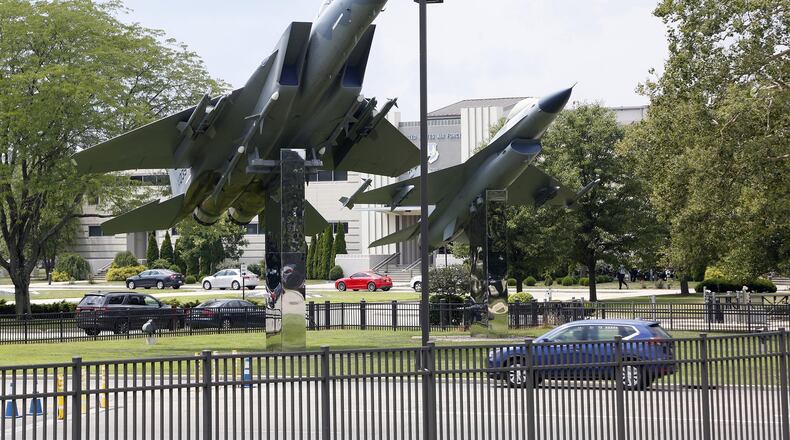Lt. Gen. Robert McMurry, commander of the Air Force Life Cycle Management Center, headquartered at the base, said just over 40 percent of the base workforce will be eligible to retire in five short years. And 55 percent of that workforce is older than 45, he added.
MORE: Wright-Patterson needs workers: Large portion of Wright-Patt workers eligible for retirement
Base officials are quick to emphasize that not every worker who is eligible to retire will in fact retire right away. But McMurry said those twin statistics shed light on what he called “the problem.”
One way to put the problem: The base needs to fill 3,120 jobs in the next five years.
“We’re going to need workers,” said McMurry, who oversees a center with more than 28,000 employees across the nation. “The other thing is, I’m going to need workers with skills …. We need a skills refresh.”
Wright-Patterson is home to the state’s largest single-site employer with some 30,000 employees going to work there on a typical day, having a $16 billion economic impact on a 14-county region surrounding Dayton.
RELATED: 5 key findings we learned from Wright-Patt active shooter report
The installation is home to not just McMurry’s Air Force Life Cycle Management Center, but the Air Force Materiel Command, the heart of Air Force logistics work, touching everything from uniforms to the modernization of nuclear weapons.
The base needs more than scientists and engineers. It needs contract specialists, business managers, lawyers and others, McMurry said.
“We need two to one — we need business people more than we need engineers,” the three-star general said with a smile. “And as an engineer, that pains me.”
Gen. Arnold Bunch, commander of AFMC, gave his audience a sense of the stakes involved. The mission is nothing less than national defense, equipping the war-fighter, who remains the foundation of everything the command does, he said. And the nation’s adversaries need to see the U.S. Air Force as truly formidable, the four-star general said.
“Our intent is to be so prepared and so capable that that fight does not occur,” Bunch said.
The mission also entails keeping older airplanes flying, including the mighty B-52 bomber, which was last delivered in the early 1960s and will likely fly through the 2050s.
“How many of you would be willing to go fly critical missions or do things in your 60-year-old vehicles,” Bunch asked. “We’re flying those around now, all the time. And doing missions all around the world, and doing it in a way that no one ever been able to do before.”
Monday’s forum at the museum sprang from concerns about Wright-Patterson’s aging workforce expressed last year at the Ohio defense forum in Columbus.
About half of those who work at Wright-Patterson are within or nearing “the autumn and winter of their careers,” Col. Tom Sherman, commander of the 88th Air Base Wing, said during that conference last year.
That number amounts to 15,000 of the base’s 30,000 employees, said Ohio Lt. Gov. Jon Husted, whose remarks opened Monday’s forum.
“Think about this: There are going to be 20,000 job openings here in a matter of time,” said Husted, a University of Dayton graduate, referring to an estimate of the number of openings created by new missions and expected retirements.
“These are real jobs to support very important missions,” Husted said.
Joshua Edwards and Alexis Williamson, two recent university graduates, said their student-trainee experiences at the base proved formative.
Base officials were with them “every step of the way,” said Edwards, a UD graduate who performs financial analysis for the Air Force Life Cycle Management Center, and Williamson, a 2012 Xavier University grad who is a program management professional.
“They absolutely set you up for success,” Edwards said.
How to search for Wright-Patterson jobs
USA jobs: www.usajobs.gov
Air Force Civilian Services: www.afciviliancareers.com
LinkedIn: www.linkedin.com
Base jobs, by the numbers
30K: Number of military and civilian workers at Wright-Patterson Air Force Base.
15K: Number of Wright-Patt workers eligible to retire in coming years.
55 percent of the base's civilian workforce is 45 or older.
41 percent of the civilian workforce will be eligible to retire within five years.
About the Author

